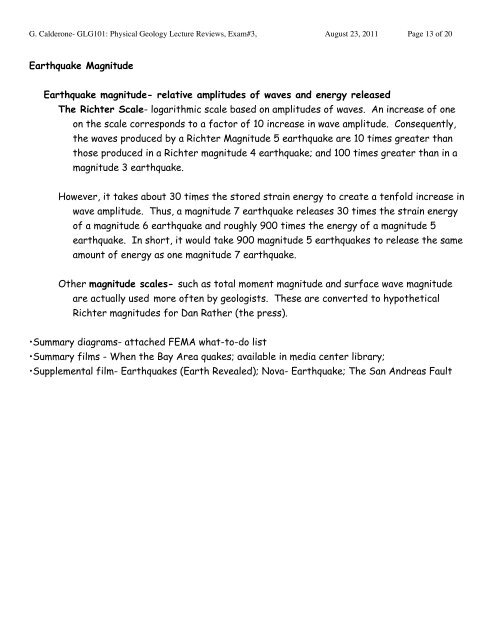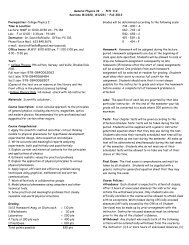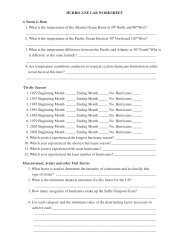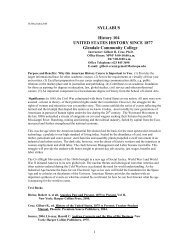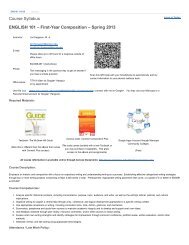GLG101: Physical Geology Lecture Outlines for Exam#3:
GLG101: Physical Geology Lecture Outlines for Exam#3:
GLG101: Physical Geology Lecture Outlines for Exam#3:
Create successful ePaper yourself
Turn your PDF publications into a flip-book with our unique Google optimized e-Paper software.
G. Calderone- <strong>GLG101</strong>: <strong>Physical</strong> <strong>Geology</strong> <strong>Lecture</strong> Reviews, <strong>Exam#3</strong>, August 23, 2011 Page 13 of 20Earthquake MagnitudeEarthquake magnitude- relative amplitudes of waves and energy releasedThe Richter Scale- logarithmic scale based on amplitudes of waves. An increase of oneon the scale corresponds to a factor of 10 increase in wave amplitude. Consequently,the waves produced by a Richter Magnitude 5 earthquake are 10 times greater thanthose produced in a Richter magnitude 4 earthquake; and 100 times greater than in amagnitude 3 earthquake.However, it takes about 30 times the stored strain energy to create a tenfold increase inwave amplitude. Thus, a magnitude 7 earthquake releases 30 times the strain energyof a magnitude 6 earthquake and roughly 900 times the energy of a magnitude 5earthquake. In short, it would take 900 magnitude 5 earthquakes to release the sameamount of energy as one magnitude 7 earthquake.Other magnitude scales- such as total moment magnitude and surface wave magnitudeare actually used more often by geologists. These are converted to hypotheticalRichter magnitudes <strong>for</strong> Dan Rather (the press).•Summary diagrams- attached FEMA what-to-do list•Summary films - When the Bay Area quakes; available in media center library;•Supplemental film- Earthquakes (Earth Revealed); Nova- Earthquake; The San Andreas Fault


